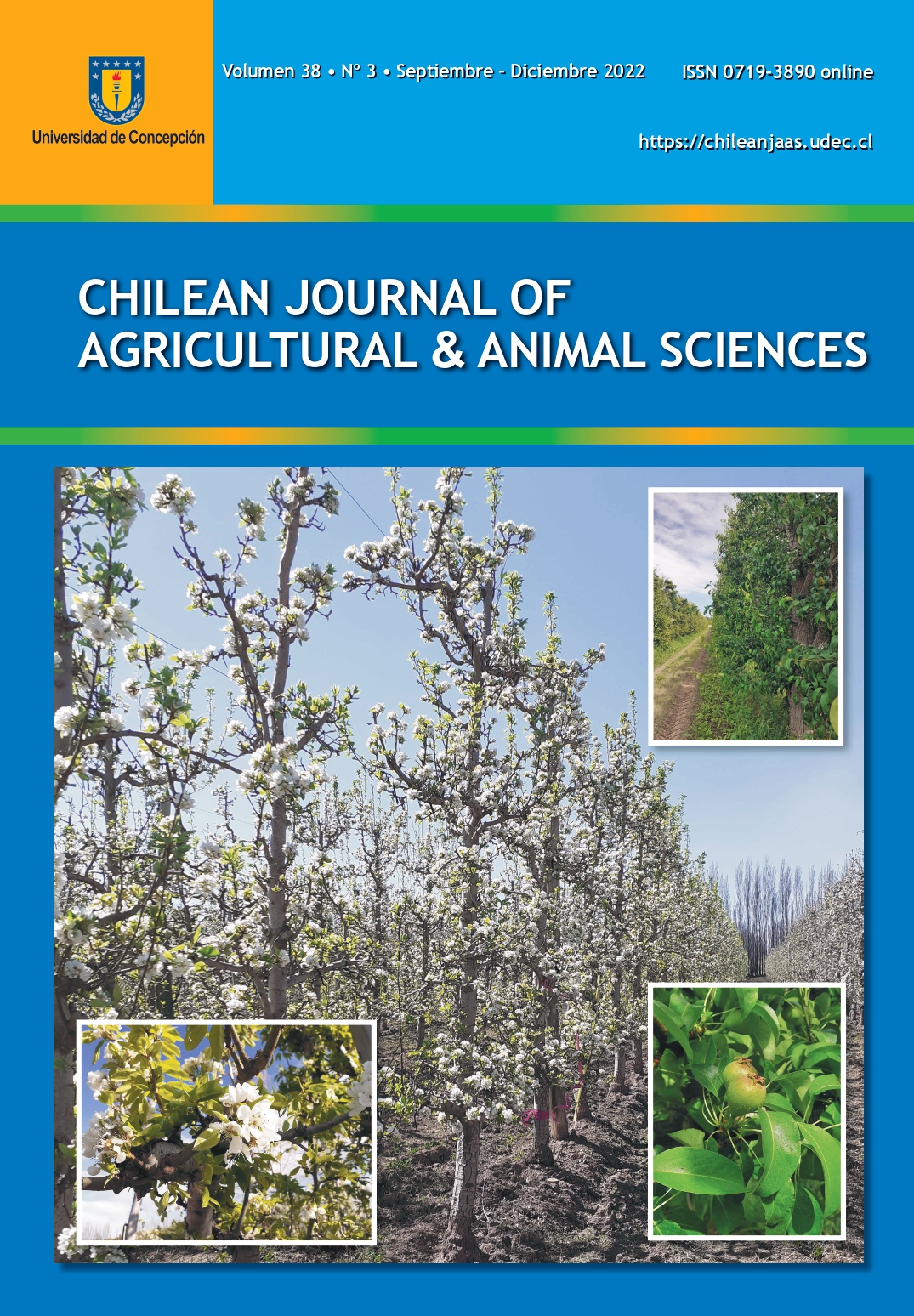EFFECTIVENESS OF TIMES AND SOURCES OF FOLIAR APPLICATIONS OF CALCIUM, BORON, AND ZINC IN THE YIELD AND PROFITABILITY OF NATIONAL COCOA
DOI:
https://doi.org/10.29393/CHJAA38-29PVAR10029Abstract
Foliar fertilization is a strategy that allows complemented crop nutrition when soil factors limit
the absorption of nutrients by the roots. The aim of the research was to evaluate the effectiveness of foliar application times and sources of Ca, B, and Zn in the yield and profitability of national cocoa. The treatments consisted of three foliar sources of Ca, B, and Zn (salts, chelates, and aminochelates) and three foliar application times (06:00 – 08:00, 11:00 – 13:00 and 16:00 – 18:00 hours). In addition, a control treatment that only received edaphic fertilization was included. Data were analyzed through ANOVA and Tukey’s test (? = 0.05). Grain yield (kg ha-1) and net economic benefit of foliar fertilization (USD ha-1) were recorded. Grain yield was significantly (p < 0.05) influenced by foliar sources and foliar application times. The aminochelates allowed reaching the highest grain yield, with an increase of 198, 289, and 440 kg, in relation to the treatments with chelates, salts, and control, respectively. Foliar applications in the morning and afternoon showed higher grain yield in relation to the noon application, and increased yield by 20.46 and 20.06% in relation to the control treatment. The greatest net economic benefit of foliar fertilization occurred with aminochelates applied in the morning and afternoon, with 442 and 418 USD ha-1, respectively. The foliar application of
aminochelates of Ca, B, and Zn is an effective strategy to increase yield and profitability of Ecuador’s national cocoa.
Downloads
Published
How to Cite
Issue
Section
Copyright (c) 2022 Carlos Cevallos Carvajal, Galo Cedeño García, Francisco Arteaga Alcívar, Sofía Velásquez Cedeño

This work is licensed under a Creative Commons Attribution 4.0 International License.







